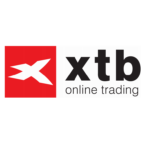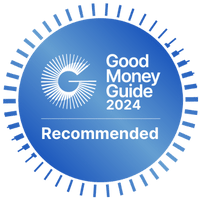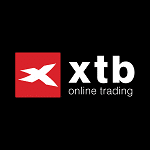-
 Richard Berry
Richard Berry
- Updated
GBPUSD trading platforms let you speculate on the strength of GBP versus the US Dollar through spot FX, CFDs, financial spread betting or futures & options. We have compared and reviewed what we think are the best GBPUSD trading platforms.
Compare GBPUSD Brokers
You can use our GBPUSD comparison table to rank brokers by how much commission they charge and what it costs to hold a GBPUSD position overnight. You can also see which GBPUSD trading platforms let you trade via CFDs, spread betting, have DMA access through futures and options and what the minimum deposit is for each account.
| GBPUSD Broker | GBPUSD Trading Costs | Minimum Deposit | GMG Rating | More Info | Risk Warning |
|---|---|---|---|---|---|
 | 0.9 | £100 | See Platform | 71% of retail investor accounts lose money when trading CFDs with this provider | |
 | 0.4 | £1 | See Platform | 75.3% of retail investor accounts lose money when trading CFDs with this provider | |
 | 0.9 | £1 | See Platform | 64% of retail investor accounts lose money when trading CFDs with this provider | |
 | 1.3 | £100 | See Platform | 80% of retail investor accounts lose money when trading CFDs with this provider. | |
 | 0.6 | £250 | See Platform | 70% of retail investor accounts lose money when trading CFDs and spread bets with this provider. | |
 | 0.7 | £1 | See Platform | 65% of retail investor accounts lose money when trading CFDs with this provider | |
 | 2 | $50 | See Platform | 51% of retail investor accounts lose money when trading CFDs with this provider. You should consider whether you can afford to take the high risk of losing your money | |
 | 0.9 | £1 | See Platform | 68% of retail investor accounts lose money when trading CFDs with this provider | |
 | 0.0008% | $2,000 | See Platform | 62.5% of retail investor accounts lose money when trading CFDs with this provider | |
 | 0.9 | £100 | See Platform | 69% of retail investor accounts lose money when trading CFDs with this provider. | |
 | 1.4 | £1 | See Platform | 76% of retail investor accounts lose money when trading CFDs with this provider | |
 | 1.3 | £10 | See Platform | 66.95% of retail investor accounts lose money when trading CFDs with this provider |
Our picks of the best brokers for trading GBPUSD
❓Methodology: We have chosen what we think are the best GBPUSD trading platforms based on:
- over 17,000 votes in our annual awards
- our own experiences testing the GPBUSD accounts with real money
- an in-depth comparison of the features that make them stand out compared to alternatives.
- interviews with the GBPUSD broker’s CEOs and senior management
City Index: Best broker for GBPUSD CFD trading
- Costs & spreads: 0.9
- Minimum deposit: £100
- Overnight financing: 2.5% +/- SOFR
- Account types: CFDs & spread betting
71% of retail investor accounts lose money when trading CFDs with this provider
City Index Review

Name: City Index
Description: City Index is one of the oldest spread betting and CFD brokers based in the UK. They were founded in 1983 and offer trading in over 13,500 financial markets, to around 126,000 active clients. City Index is currently owned by StoneX, a US brokerage listed on the NASDAQ valued at $1.75bn.
71% of retail investor accounts lose money when trading CFDs with this provider
Why we like them:
City Index offers some of the best trading tools and analysis to help traders perform better. Their unique post-trade analytics and voice brokerage service make it an excellent choice for large and frequent traders.
Pros
- Excellent trading tools
- Post-trade analytics
- Publically listed (part of StoneX)
Cons
- Trading only, no investment account
- Limited options markets
- No direct market access
-
Pricing
(4)
-
Market Access
(4.5)
-
Online Platform
(4)
-
Customer Service
(4.5)
-
Research & Analysis
(4.5)
Overall
4.3Pepperstone: Automated GBPUSD trading on MT4
- Costs & spreads: 0.4
- Minimum deposit: £1
- Overnight financing: (1/FX Rate) * (Trade Size*Tom Next )
- Account types: CFDs & spread betting
75.3% of retail investor accounts lose money when trading CFDs with this provider
Pepperstone Review

Name: Pepperstone
Description: Pepperstone were founded in 2010 in Australia and have since then grown to be a global brokerage with international offices and around 400,000 active clients. They offer spread betting and CFDs on 1,200 major market instruments, which means they focus on the most heavily traded assets, mainly forex and indices trading. Of those 900 are shares on the major stocks on international exchanges.
75.6% of retail investor accounts lose money when trading CFDs with this provider.
Why we like them
Pepperstone is a good choice for traders that want to automate their trading strategies through MT4. As far as MT4 brokers they are one of the biggest and best and offers so good EA packages.
Pros
- Tight pricing
- Wide range of MT4 markets
- Pre-built MT4 indicator packages
Cons
- Limited market access
- Only third-party platforms
-
Pricing
(5)
-
Market Access
(3.5)
-
Online Platform
(4)
-
Customer Service
(4)
-
Research & Analysis
(4)
Overall
4.1Spreadex: GBPUSD trading with personal service
- Costs & spreads: 0.9
- Minimum deposit: £1
- Overnight financing: Tom/Next +0.8%
- Account types: CFDs & spread betting
72% of retail investor accounts lose money when trading CFDs with this provider
Spreadex Review

Name: Spreadex
Description: Spreadex is a financial spread betting broker that has been in operation since 1999. It was founded by ex-city trader Jonathan Hufford and unlike many of its peers, it is not based in London, but instead is headquartered in St Albans Hertfordshire. Spreadex offers both financial spread betting and CFD trading from the same account. The company has some 60,000 account holders and offers access to more than 10,000 financial instruments, including UK small-cap shares, where it is something of a specialist.
Is Spreadex a good broker?
Spreadex is one of the most established spread betting brokers. They focus on providing excellent customer service through experienced dealers and a trading platform built from scratch in-house. A good choice for those that like to spread bet.
Pros
- Spread betting & CFDs
- Smaller cap stock trading
- Great customer service
Cons
- Not publically listed
-
Pricing
(4.5)
-
Market Access
(4.5)
-
Online Platform
(4)
-
Customer Service
(5)
-
Research & Analysis
(4)
Overall
4.4Interactive Brokers: Discount GBPUSD trading & conversions
- Costs & spreads: 0.0008%
- Minimum deposit: $2,000
- Overnight financing: -3.188% / -1.188% (BM -/+ 1%)
- Account types: CFDs, DMA, futures & options
60% of retail investor accounts lose money when trading CFDs with this provider
Interactive Brokers Review

Name: Interactive Brokers
Description: Interactive Brokers is a major US online automated electronic broker company. The financial broker is listed on the Nasdaq Exchange with ticker IBKR. The firm operates in 150 electronic exchanges in 33 countries, and offers trading in 23 currencies. Interactive Brokers has more than 1.75 million institutional and retail customers.
Why we like them
Interactive Brokers is an exceptional trading platform that offers institutional-grade trading capabilities to private clients around the world. IBKR has some of the lowest trading and investing fees and the widest market range in the industry.
Pros
- Very low dealing fees
- Wide market range
- Direct market access
- Complex order types
Cons
- Customer services can be slow
-
Pricing
(5)
-
Market Access
(5)
-
Apps & Platform
(5)
-
Customer Service
(3)
-
Research & Analysis
(5)
Overall
4.6IG: Best broker for spread betting on GBPUSD
70% of retail investor accounts lose money when trading CFDs and spread bets with this provider.
IG Review

Name: IG
Description: Founded in 1974 as Investors Gold Index, then IG Index, now just “IG” is one of the world’s largest margin trading brokers. IG offer CFDs, FX and Spread Betting (in the UK) alongside share trading and prime brokerage to over 313,000 active clients and offers 17,000 tradable markets. IG also recently introduced physical share dealing and smart portfolios for longer-term investors.
70% of retail investor accounts lose money when trading CFDs and spread bets with this provider.
Is IG a good trading platform?
Yes, IG provides an excellent all-round trading and investing brokerage service. IG pioneered online trading and financial spread betting for private clients and remains not only one of the largest online trading platforms, but also one of the best. IG stands out through deep liquidity, high market range and excellent added value such as trading tools and analysis.
Pros
- Vast range of markets
- Excellent liquidity & DMA equities
- Listed on the London Stock Exchange
Cons
- Customer service can be slow
- No DMA futures trading
- Still charges inactivity fee
-
Pricing
(4.5)
-
Market Access
(5)
-
Online Platform
(5)
-
Customer Service
(4)
-
Research & Analysis
(5)
Overall
4.7CMC Markets: High-tech GBPUSD trading platform
- Costs & spreads: 0.9
- Minimum deposit: £1
- Overnight financing: Tom Next +0.98%
- Account types: CFDs & spread betting
74% of retail investor accounts lose money when trading CFDs with this provider
CMC Markets Review

Name: CMC Markets
Description: CMC Markets is one of the original spread betting and CFD brokers based in the UK. They have been providing forex trading services since 1989 and are now listed on the London Stock Exchange. The broker has over 300,000 active clients trading online and is operated from 13 global offices, with headquarters in The City of London.
68% of retail investor accounts lose money when trading CFDs with this provider
Is CMC Markets legit?
Yes, CMC Markets has always offered, and still does one of the best trading platforms for high-frequency and active traders. It’s a good choice for those who want to trade on tight spreads, with a platform built on exceptional tech.
Pros
- Excellent trading platform
- Good liquidity
- Unique sentiment tools
Cons
- Trading only, no investing account
- Limited smaller cap stocks
-
Pricing
(5)
-
Market Access
(4)
-
Online Platform
(5)
-
Customer Service
(4)
-
Research & Analysis
(5)
Overall
4.6XTB: Good GBPUSD trading educational material
- Costs & spreads: 1.4
- Minimum deposit: £1
- Equity overnight financing: -0.02341% / -0.00159% DAILY
- Account types: CFDs
81% of retail investor accounts lose money when trading CFDs with this provider
XTB Review

Name: XTB
Description: XTB is a CFD and forex broker headquartered in Poland and listed on the Warsaw Stock Exchange (WSE:XTB) valued at over $1bn. XTB was founded in 2003 and offers forex, indices, commodities, ETF and stock CFD trading. XTB has historically used celebrity endorsements to promote it’s brand including Jose Mourinho, Conor McGregor, Joanna Jędrzejczyk and Jiří Procházka.
76% of retail investor accounts lose money when trading CFDs with this provider
Summary
XTB, are a decent all-round trading platform and a good choice for most small-to-medium sized CFD traders. They are publically listed in Poland and offer, competitive spreads on a fairly wide range of markets.
The key things to focus on when considering trading with XTB are:
- They have their own proprietary trading platform. When I interviewed Omar Arnaout, the XTB CEO Omar Arnout, he said “I’m really proud of our platform and honestly believe it’s one of the best in the market.” Rightly so.
- They really push client education, XTB won “Best Trading Platform Education” in our 2023 awards (although they didn’t show up to collect the trophy, they never do). You can read their Q&A on forex education here.
- Customer service is paramount. Omar said that “first and foremost is the customer service”. I really agree with this as I think it’s important to have a few different trading accounts (diversify, diversify, diversify) and you’ll trade more with the broker that treats you best.
Pros
- Publically listed
- Mulitple platform choices
- Innovative order types
Cons
- Not UK based
- No DMA
-
Pricing
(4)
-
Market Access
(4)
-
Online Platform
(4)
-
Customer Service
(4)
-
Research & Analysis
(4)
Overall
4Saxo Markets: Best broker for GBPUSD ETFs & investing
- Costs & spreads: 0.7
- Minimum deposit: £500
- Overnight financing: Tom/Next Swap +/-0.60%
- Account types: CFDs, futures & options
70% of retail investor accounts lose money when trading CFDs with this provider
Saxo Review

Name: Saxo
Description: Saxo is one of the largest CFD brokers worldwide and provides direct market access to equities, bonds, forex, futures and options as well as being a major liquidity and infrastructure provider to wealth managers, banks and smaller brokers.
65% of retail investor accounts lose money when trading CFDs with this provider
Is Saxo Markets a good broker?
Yes, Saxo is a good choice for more sophisticated traders. The platform, analysis, and direct market access may be too complicated for beginners. But, for experienced traders its coverage, commissions and research are unrivalled.
Pros
- Direct market access
- Low commissions
- Robust trading platform
Cons
- Seen as a trading platform for professionals
-
Pricing
(4.5)
-
Market Access
(4.5)
-
Online Platform
(5)
-
Customer Service
(4.5)
-
Research & Analysis
(4.5)
Overall
4.6eToro: Copy other people’s GBPUSD trading
- Costs & spreads: 2
- Minimum deposit: $50
- Overnight financing: 6.4% +/- SOFR
- Account types: CFDs
51% of retail investor accounts lose money when trading CFDs with this provider. You should consider whether you can afford to take the high risk of losing your money
eToro Review

Name: eToro
Description: eToro is a social trading platform that lets their users share new and existing CFD positions and their investment portfolios. eToro was founded in 2007 in Tel Aviv, Isreal and has grown to offer investing and trading on 3,000 global assets (including real cryptocurrencies) to 30 millions users worldwide.
51% of retail investor accounts lose money when trading CFDs with this provider. You should consider whether you can afford to take the high risk of losing your money
Is eToro a good broker?
Yes, eToro does have its flaws for experienced investors, but if you are just getting started eToro is a great introduction to financial markets. eToro is actually a very innovative trading platform offering copy trading, social networking and unleveraged CFDs.
Pros
- Really simple to use
- Social and copy-trading
- Set your own leverage
- Pre-built sector portfolios
Cons
- Can only trade and invest in USD
- No SIPPs or ISA
- No direct market access
-
Pricing
(4)
-
Market Access
(4)
-
Online Platform
(4.5)
-
Customer Service
(4)
-
Research & Analysis
(4)
Overall
4.1What is GBPUSD Trading?
All sovereign countries issue their own national currency. For the UK, its currency is the Pound Sterling (ticker GBP).
Forex (FX) is the short name for ‘foreign exchange’. It is a market about trading money. Unlike stocks, FX is about measuring one money against another foreign currency. It exists because people want to change money.
Pound Sterling is one of the most traded currencies in the world. The City of London conducts a huge slice of FX trading every day. According to the latest Bank of International Settlements (BIS) Triennial Global FX Turnover Survey (Sept 2019, available here), US$844 billion of GBP are traded every day. So GBP is a liquid, easy to trade currency.
GBPUSD simply represents one particular FX pair – how much US Dollar to convert into one Pound Sterling. Currently the rate is about 1.30, meaning it takes 1.3 US Dollar to change into one pound. Parity means 1:1.
How much is GBPUSD traded?
| FX | Value Traded (US,Bln) |
|---|---|
| USD | $5,819 |
| EUR | $2,129 |
| JPY | $1,108 |
| GBP | $843 |
| AUD | $445 |
| CAD | $332 |
| CHF | $327 |
| CNY | $284 |
| Others | $1,892 |
Source: BIS (Data as of Apr 2019)
How can you trade the GBPUSD?
We have ranked Pepperstone as the best broker for trading GBPUSD based on their spreads of 0.44
For this ranking of the best forex trading platforms to trade GBPUSD we have ranked by which forex broker has the cheapest trading costs.
Forex is a 24-hour, 5-days a week market. Prices never stop blinking. You can trade forex with CFDs futures, forwards, spread bets, or even exchange-traded funds (ETFs). Because of this liquidity, there are forex trends that astute traders can exploit.
You can trade GBPUSD with either spot rates or future prices. Spot rates settle and rollover every session while with currency futures you only need to rollover at expiry time, usually at the end of March, June, September and December.
Read more about the different ways to trade GBPUSD and compare all brokers for Forex trading with our FX comparison tables:
How to learn to trade GBPUSD?
Trading FX markets is easy. Trading FX markets successfully is not. But anyone can succeed – provided they take the right approach.
Watching the exchange rate and learning its day-to-day behaviour is one key success factor. Remember, you do not trade markets. Rather, you trade your beliefs and understanding about the market. Write down any pattern you think is relevant about the rate. Test these patterns against its past movements. Do they work?
Paper trade for a few months. Work out if the currency is suitable to your trading strategy.
Can you make money trading GBPUSD? You certainly can! However, you can also lose money quickly. You need to run the right strategy at the right time.
You need to deal with probability too. Nobody get it right every time. Sometimes you win, sometimes you lose. To win out in the long run, you have to cap your losses and max your gains.
Position size your trade in a way that even if prices move significantly against you the overall portfolio remains viable.
A practical guide to trading GBP/USD is as simple as:
- checking your leverage value, it will normally be represented as two numbers like; 1:50, 1:100 or 1:200
- choose a broker to trade forex with
- select the currency pair you wish to trade, like EUR/USD.
- add a stop loss or automatic close to your order
- choose whether to buy or sell on your trade
What are the major risks of trading GBPUSD?
The biggest risk from trading GBPUSD is that you are on the “wrong side” of the trend. When you realise this, abandon the trade as soon as possible. Do not hope that the market will turn in your favour – because it may not.
Many traders use stop losses as a guard to prevent a losing trade from ballooning. You should do so too.
Another risk factor comes from the pattern of the rate. In other words, the rate is not ‘trending’ either up or down enough. It becomes harder to exploit price movements because there is insufficient distance between the entry and exit points.
The next risk factor relates to extreme price moves. These days in the FX market, there is a tendency for a rate, in some quiet time zones, to move violently. It happened to Pound Sterling a while back and Japanese Yen earlier in Jan ’19. The proliferation of algorithmic trading and temporary structural mishaps may gave lead to volatile trading. During these periods, transaction costs are likely to go up simply because brokers may exit the market temporarily.
On Sterling pairs, Brexit is another to watch for. Just recently, Sterling jumped when the Conservatives won the election.
The last risk factors concerns leverage. Many retail FX accounts lose capital over time because of the overly high leverage. Minute, random price movements decimate accounts equity quickly if traders are caught on the wrong side. Small losses piled up. This can lead to an early termination of the account.
Where to find GBPUSD news and forecasts?
The first step to find out more about a foreign exchange rate is to read daily news about it. In particular, you need to pay attention to three things that will impact the Sterling-USD exchange rate:
- Regular data releases.
- Central bank meetings and monetary policies
- Ad-hoc international financial meetings, eg G7 Ministerial or Eurogroup meetings.
Google ‘FX News’ and there will be a list of good websites detailing FX trading. Read recent news about GBPUSD will tell you what is impacting the rate. Look for major news agencies such as Reuters.
Also remember to look at data releases for the week ahead. This will give you some ideas about the forthcoming things that traders will be looking at. In most tables there will be a row of ‘expected value’ of the data. Note them.
What moves the GBPUSD price?
Once you have a basic knowledge of the GBPUSD, you then progress to understand the following:
- Investor expectations
- Market psychology
- Dealing with unexpected events.
Data flow by itself seldom move markets significantly. It is the prior expectations that cause sharp moves. Pay attention to the market reaction (to any data) since it will tell you a lot about market expectations. Sometime prices can drift in the direction of the initial reaction for days, creating opportunities.
On market psychology, you will have to read lots of positioning reports, sentiment data, and price trends – and draw your own conclusion. Does it make sense? The longer the price trend, the more extreme market psychology becomes. In markets generally, there is this concept called self-fulfilling loop, which reinforces the prevailing trend.
Lastly, you will have to guard against surprising events, such as verbal interventions by important policymakers. In the UK, such interventions are rare but it does happen. In April 2018 for example, Sterling was recovering until the governor said that a rate hike in May is not a ‘foregone conclusion’ (FT Paywall). Sterling peaked and went into a downtrend for the next six months. To deal with unexpected events, you will have to incorporate risk management into your strategies including mandatory stops, risk sizing, and diversification.
What are the cost of trading GBPUSD?
Given that FX trading are mainly financial trading – without any underlying currencies changing hands, there are a few trading costs you need to be aware of:
- Commission (if any)
- Bid-ask spread (the difference between buying and selling at any time)
- Rollover costs – this is the cost of rolling over current positions
Alternative Forex Pairs For Trading
You can read about the the most liquid forex pairs in our guide to the best forex pairs for trading.
This article contains affiliate links which may earn us some form of income if you go on to open an account. However, if you would rather visit the GBPUSD brokers via a non-affiliate link, you can view their GBPUSD trading platform pages directly here:
⚠️ FCA Regulation
All GBPUSD trading platforms that operate in the UK must be regulated by the FCA. The FCA is the Financial Conduct Authority and is responsible for ensuring that UK GBPUSD brokers are properly capitalised, treat customers fairly and have sufficient compliance systems in place. We only feature GBPUSD trading platforms that are regulated by the FCA, where your funds are protected by the FSCS.




